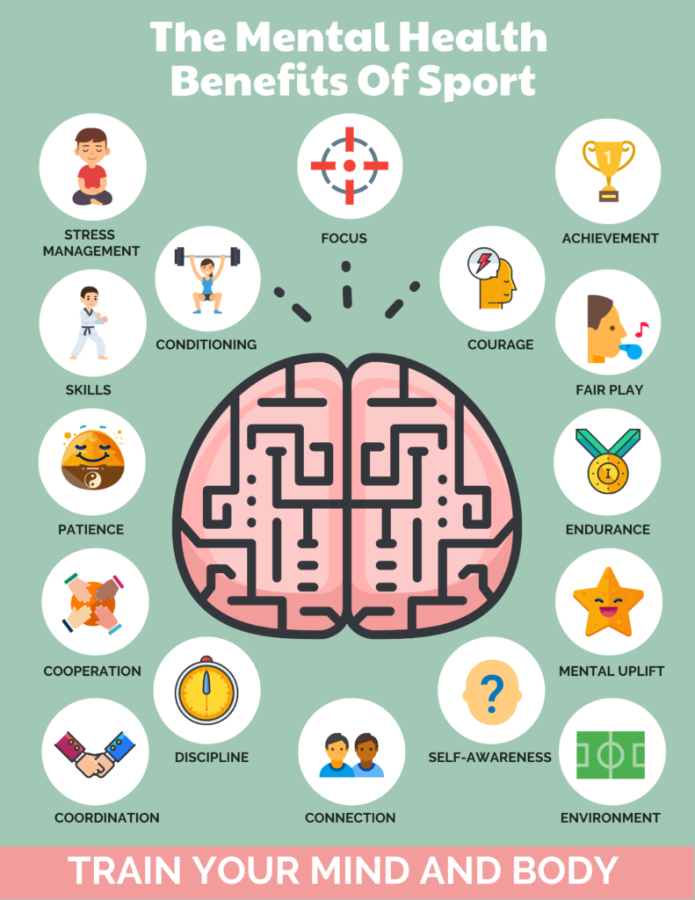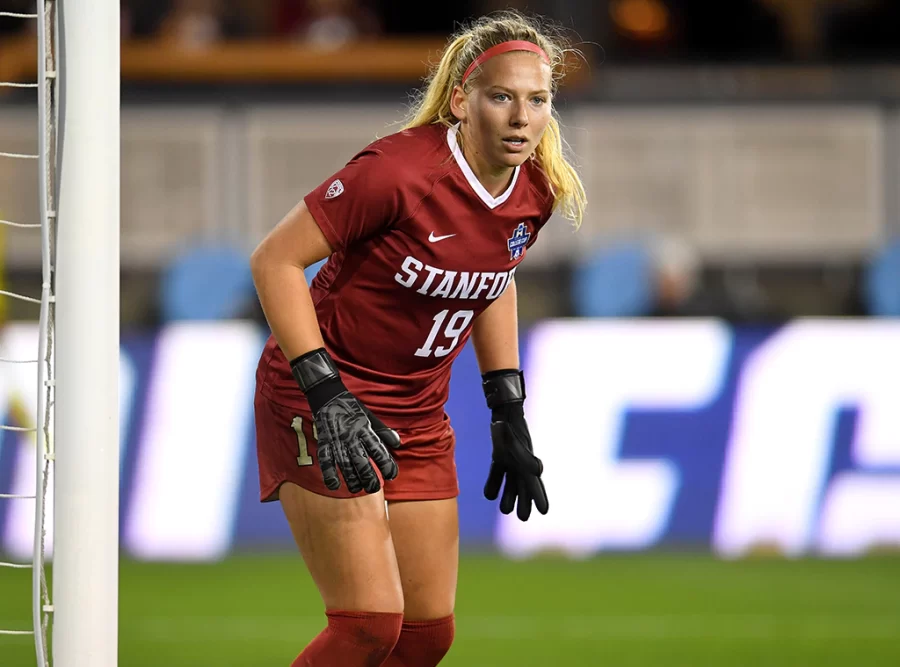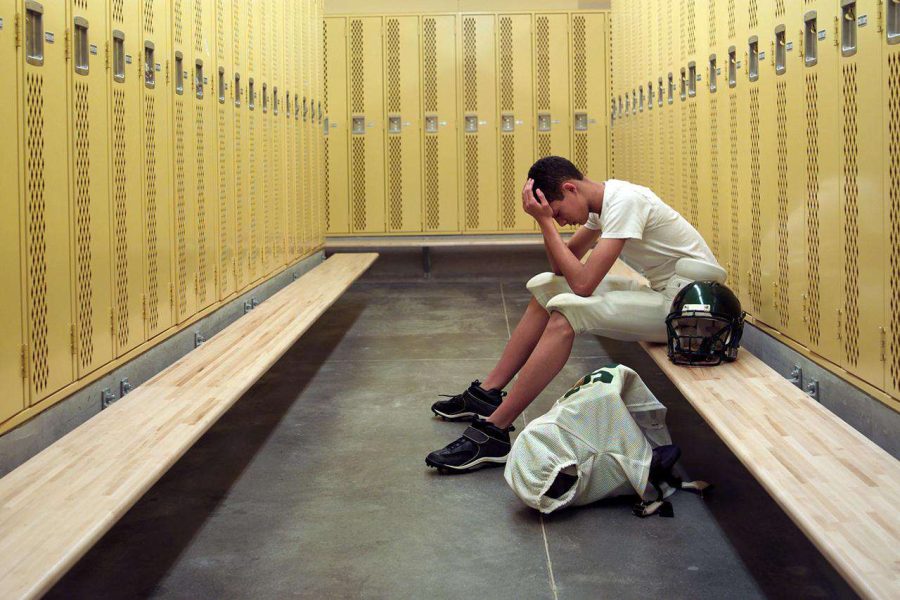Mental Health in Sports
December 1, 2022
When it comes to sports, we normally think of the positive things like winning the championship and creating lifelong friendships with teammates. We often don’t look at the other side and the toll that sports can take on you mentally. Eating disorders, anxiety, and long-term injuries are topics that are often overlooked and need to be discussed more. This package will take a deep dive into mental health in sports from a national and global perspective.
Pro’s of mental health in sports
Sports, sports, sports… Everyone says you should play one.
The benefits are quickly reaped, yet many people dislike playing them. Sports has always amazed me; it can move people from different backgrounds, uniting them in a common goal – a Phillies win, Roger Federer’s retirement, or Manchester United recruiting a new player.
But what exactly are the mental health benefits of playing one? Let’s be clear, we will only be discussing amateur sports, not mental health in professional sports – that is an entirely different story.
The connotation with sports has always been weight loss, good physical shape, and athleticism. But, many people are deviating from this mindset to a more holistic outlook – some are shifting to the viewpoint that sports can be a tool to maximize good mental health. With the rising popularity of holistic exercises like yoga and pilates significantly contributing to this change, young and old people alike are changing their attitudes towards sports and utilizing sports as a tool to boost their livelihoods.
Recreational sports like a community cricket club or a high school sports team will enhance social skills like self-esteem, communication, and teamwork. Individuals work together with teammates to accomplish a common goal. Sports results in more robust and improved skills as participation increases. They also help to enhance self-image and allow for one to harbor a sense of pride in accomplishments, which can then be applied off the field well.
Physical activity stimulates neurotransmitters that induce happy feelings and pleasure – endorphin relief. Sports participation gives one a break from the stressful environment and allows for social interaction. Movement alone aids in improving your mood, but social interaction in a recreational setting produces mental health benefits like relaxation and a boost in serotonin.
Physical activity allows you to exert energy, releasing the pent-up stress and worries of the day. A tired body means a tired mind, so it aids in regulating sleep cycles. Sleep cycles are critical when it comes to the body continually functioning in a high capacity, so sleep increases focus and concentration and gives your body needed mental rest. Depression and anxiety are kept at bay when participating in physical activity; the increased activity releases endorphins – relaxing the mind and reducing the number of stress hormones in your body.
The changed attitude in sports, from a purely physical perspective to a mental one is a breakthrough for the mental health of individuals across the globe. – It allows for them to practice healthy living.
Eating disorders in athletes
Recently, there has been an increase in awareness surrounding mental health, yet still, it seems as though eating disorders are continuing to be overlooked. It is as if even the mention of them is taboo. What’s even more unsettling ‒‒ the probability of eating disorders in athletes.
The eating disorders most common in athletics are anorexia nervosa and bulimia nervosa. To better understand how such disorders can affect athletes, it is important to understand what they are first.
Anorexia nervosa is one of the more well-known eating disorders that occurs when an individual purposefully restricts what they eat in effort to lose weight. These individuals obsess about being overweight, but due to their psychological mindset, they often end up being underweight and not even realizing it. Or they realize it, but feel that being underweight is an achievement.
For people who suffer from bulimia nervosa, they similarly feel the need to lose weight, but instead of restricting what they eat like those who suffer from anorexia nervosa, these individuals choose to eat in excessive amounts, and then go through spurts of self-inflicted vomiting. They still obsess over weight, but choose to rid themselves of the supposed weight in a different way.
Of course, eating disorders can affect every individual regardless of gender, weight, race, or any other factor, but for athletes who always have the pressure to be in shape, it is a commonality. For example one of the sports that is most heavily affected by the plague that is eating disorders, is cross country.
Athletes who need to have endurance, or in another way, have to run for long periods of time, are aware of the physical physique they have to abide by. While it is possible to maintain a healthy lifestyle in sports, many often will obsess over it, and in the present day where social media has taken over people’s lives, it is even more prevalent for athletes to compare themselves to their competitors via media outlets.
Gymnastics as well as cross country, has high rates of athletes who face struggles with eating disorders. While gymnastics doesn’t prioritize endurance in the same way that cross country does, it has its own health triggers that go along with the sport.
Gymnasts have the incredible challenge of flipping in the air and doing all sorts of stunts that defy gravity in many ways, and in order to accomplish such feats, gymnasts have to be in tip-top shape. For gymnastics in particular, research over multiple decades has shown that those with lower body weight and lower body fat have a higher chance at being elite in rhythmic gymnastics. Therefore, young girls will go to extreme lengths to meet this criteria, so much so that many end up engaging in disordered eating practices.
For most young gymnasts, they fall into the anorexia nervosa category as they attempt to achieve a dangerous low-calorie diet, whilst practicing for hours a day. What’s even worse, those who are younger in age are more susceptible to establishing unhealthy practices in mental health, and especially in eating. With coaches especially in the elite gymnastics world fueling these dangerous habits, it is setting up young children for a lifetime of serious mental and physical issues.
However, how does this affect high-school students one might ask. Very few high schoolers will go on to be an Olympian gymnast or a nationally recognized athlete. This does not eliminate common athletes from developing eating disorders though. According to eatingdisorderhope.org, “Among high school students, rates of eating disorders among athletes is higher than non-athletes, with 7.3% of athletes affected and 2.3% of non-athletes impacted.”
And what most don’t know is that recently in the world of mental health, a new type of disorder has emerged ‒ bigorexia. It is a type of body dysmorphic disorder that commonly affects the male population and by definition, it occurs when an individual obsesses over building muscle. For those who suffer from this disorder, it is common for people to feel pressure from their sport and teammates to look like they are the strongest on the field and with social media platforms only emphasizing this point, more young people are developing this disorder that shares similar qualities to anorexia and bulimia.
No matter how you look at it, disordered eating is heavily affecting the population, especially athletes, and it is a rising problem in the world. More often than not, fans and coaches want to see the wins in sports that they so desperately desire, but maybe what we should be rooting for is our athletes’ health, because unfortunately, it seems to be on the rapid decline.
Professional Athletes Struggle With Mental Health
Rising suicide rates in college athletes
In recent years, suicide rates among college student-athletes have risen, sparking concern from coaches, parents and athletes.
While all college-aged students face immense pressure, student-athletes take on the pressure to perform both academically and athletically.
As of May of 2022, five college athletes died by suicide, bringing attention to the rising suicide rates among student-athletes to the national level. Within seven weeks, Lauren Bernett, Sarah Schulz and Katie Meyer all took their own lives. All three of these women had successful careers on their respective college teams. After the death of Katie Meyer, Stanford’s starting goalie, in March of 2022, many called for the National Collegiate Athletic Association (NCAA) to make a statement addressing the issue. NCAA spokesman, Christopher Radford, responded by stating that the mental health crisis is a widespread issue, and therefore does not necessarily need to be addressed by the NCAA, which angered many athletes.
According to the NCAA, student-athletes report experiencing sleep difficulty, loneliness and anxiety, but are less likely to seek help than non-athletes. The stigma surrounding seeking assistance regarding mental health in the sports industry oftentimes discourages student-athletes from asking for the help they need. Many athletes are taught from a young age that in order to succeed on the court or the field, they need to be mentally tough. This sometimes conveys the wrong message that mental toughness equates to not being able to ask for help, fearing the perception of a weak image.
In order to combat the rising suicide rates, athletes are urging their universities, and the NCAA, to provide better services. One former college runner turned activist, Andrew Cooper, believes that the preservation of student-athletes mental health is not a priority for the NCAA, because, ultimately, the NCAA is a business.
“The more money pumped into the system, the more pressure on coaches, the more pressure gets put on athletes,” said Cooper in an interview with the Washington Post.
Especially with the new name, image and likeness ruling, college athletes feel even more pressure to perform well, not only to earn scholarships but to earn brand deals. Now, in addition to balancing schoolwork, athletics and college life, students also face the pressure to form a social media presence, which can bring about further complications.
In order to get to the collegiate level in athletics, students have to dedicate their life to their sport. Without adequate resources and the stigma surrounding asking for help, student-athletes are left unequipped to handle the sometimes overwhelming pressure of the demands put on a student-athlete.
Muttathil reflects on the mental impact of her long-term injury
Muttathil’s injury not only changed her field hockey career, but her entire life.
When it comes to mental health in sports, having a long-term injury can be devastating. One moment you’re one of the best players on your team and the next you are on the ground, in pain, with a season-ending injury. This was the case for Cherry Hill East field hockey player Kiran Muttathil (‘23).
It was during the middle of her sophomore season when East took on Eastern in a field hockey game. Muttathil was racing for a loose ball when she took an awkward step and collapsed on the ground. The athletic trainers raced over to her and Muttathill ended up at Urgent Care that night. After getting an MRI, what Muttathil had feared worse came true– she had torn her ACL.
The recovery process was a grueling experience for Muttathil. A month after the injury, she had to get her ACL reconstructed, but experienced many complications along the way. While most are able to walk around three months after the reconstruction, Muttathil was unable to. She found out she had arthrofibrosis, a condition where fiber scar tissue was on top of her ACL graft. She had to have additional surgeries in February 2021 and 2022 to correct the arthrofibrosis.
During her junior season, Muttathil was able to start getting back on the field and playing with her team. She was cleared to practice when the season began, but only started playing games midway through the season. Despite being able to play, Muttathil would only play two-quarters of the game. While it was nice to be playing again, Muttathil missed being able to fully play like how she could before the injury.
Going into her senior year, Muttathil had to make the difficult decision not to play. The possibility of having yet another surgery was not a risk that she was willing to take. She believes that having a properly functioning knee for the rest of her life outweighed playing a senior season knowing that it would be her last.
The ACL injury significantly impacted Muttathil not only physically but also mentally. This was the sport that she has loved since beginning high school and was naturally good at. She had just started the process of talking to high academic Division I schools, including some Ivy League schools. Once she suffered the injury and had surgery, colleges stopped talking to Muttathil. When she tried to stay in contact with college coaches during her recovery, it was unsuccessful and she had to give up. This was a devastating blow for her considering she was expected to go Division I and then those dreams went right out the window.
Muttathill says that there are some benefits to her not playing field hockey in college. She has dreamed of going to law school her entire life and balancing that with field hockey everyday would not have been easy. She can now completely focus on her academics and going into the legal field. While it is disappointing for Muttathil that she will not be playing field hockey in college, she has been able to move on and is looking forward to other opportunities and challenges that will face her.
Mental illness in athletes on the global scale
Courtesy of The New York Times
Naomi Osaka has raised concerns over her career about mental health in athletes.
It was as if Naomi Osaka was on top of the world in 2018. In the U.S. Open, Osaka beat out tennis legend Serena Williams 6–2, 6–4 to win her first Grand Slam title. However, in the years to follow things have not been the same for her as the following months completely contrast her win in 2018.
Osaka has brought the topic of athletes’ mental health to the center of sports conversations as her struggle with anxiety and depression shows that athletes are also just as human as anyone else. In 2021, Osaka withdrew from the French Open after she was fined $15,000 for skipping a press conference. She was threatened to be suspended from the tournament if she continued skipping press conferences, explaining her withdrawal from the competition. Osaka told Insider that she finds it very stressful to give the best answers to the press. Being vulnerable and anxious, she decided the best thing to do for herself was to skip the press conference.
Players at the top of their level like Osaka endure immense pressure to keep up with other elite level players and maintain their dominance in their respective sports. For Osaka, winning the U.S. Open after only being on the professional tennis scene for a few years, had created enormous amounts of pressure to keep up. It’s this pressure of maintaining excellence that causes high levels of stress, anxiety, and even depression among athletes.
Osaka was one of the catalysts for opening up about athletes’ mental health. The stigma up until that point where an athlete must show no signs of weakness had now been broken. Osaka opening up about her vulnerabilities allowed for relatability between athletes and fans through her struggles. She paved the way for other athletes to open up about their struggles with mental health like anyone else would.
All professional athletes are known for being physically fit at the highest level. However, to be at the top of their game, their mental states must also be well trained to ensure optimal performance. Athletes endure a lot of stress throughout their careers, as facing other top tier athletes that also want to make a name for themselves could cause loads of stress and anxiety. The need to perform well every week can build up stress and negatively affect people’s mental states.
American swimmer Michael Phelps is well known for being the individual with the most medals in Olympic games history. Along with that also includes a grocery list of world records and awards, which makes him one of the greatest athletes of all time.
Whilst he is known for his achievements, what people may not know about Phelps is that he has struggled with mental health throughout his career. Phelps says that he struggled with depression as well as suicidal thoughts following the 2004 Summer Olympics in Athens. Being at the top of the mountain after four years of immense training, Phelps didn’t know where to go from there. He didn’t know who he was.
In 2014, after successful stints in both the 2008 and 2012 Olympics, Phelps checked himself into a psychiatric institute. Phelps recalls viewing himself as a human for the first time instead of a swimmer. His treatment allowed him to understand the things that had been eating him up throughout his career. It’s the help he received that allowed him to escape the isolation he had endured.
As for Robert Enke, his tragedy is a constant reminder of why athletes’ mental health should always be prioritized. Enke’s story shows how everything might look fine on the outside, but may not be internally.
Enke was a German goalkeeper who rose to prominence in the late 90s and early 2000s. He found success at top clubs like Borussia Monchengladbach, Benfica, and Hannover 96, the latter of which he found his most successful. At Hannover, everything seemed to be going well for Enke. He was consistently performing well for his team and was considered the best goalkeeper in the league at the time. His performances were so great that he was considered a frontrunner for the German national team’s starting position, who would be attending the 2010 World Cup in South Africa.
Yet in November of 2009, two days after playing in a 2-2 draw against Hamburg SV, Enke tragically passed away by committing suicide. The whole soccer community was shocked by the news of his death. Everyone is unable to comprehend how a player in the prime of their life would end their life.
Enke struggled with depression throughout his career. In 2002, while at FC Barcelona he developed depression after falling out with the club and the manager. This stalled his career as Barcelona would loan him to Fenerbache and Tenerife, before leaving for Hannover in 2004. He was diagnosed with depression again in 2006 after the death of his two year old daughter Lara. In 2009 he developed depression again. Even though Enke was receiving therapy, he was never admitted into a psychiatric institute, fearing that it would end his football career. The depression had been too hard on Enke, who ended his life later that year.
Athletes, whilst being unbelievably skilled at what they do at a scale that an average person could never compare to. However, athlete’s; like humans, also suffer from mental health throughout their lives. Mental health is a constant reminder of who these athletes truly are. They’re not just athletes, they’re human.
Day in the life of Cherry Hill East baseball player Peter Longo (’23)
Anxiety disorders in athletes
The mind and body connection. For some, the act of exercising releases stress, and the body in turn secretes a chemical called endorphins. However, according to the NCAA, licensed psychologist Dr. Scott Goldman analyzed the following: nearly 85 percent of certified athletic trainers believe anxiety disorders are a growing concern. So, let’s dive into the key components of this astonishing statistic.
For starters, performance anxiety is anxiety driven in both practice and competitive settings. In a study conducted by a team at the University of Wisconsin-Milwaukee, Department of Kinesiology in Milwaukee, WI, it found that anxiety relating to sports performances are associated with sport injury prevention, rehabilitation, and the return to a sport. The relevance of anxiety due to sports is highly important to note, as in leading players, the fear of getting hurt is linked to a multifaceted correspondence.
Another aspect to recognize is that anxiety is primarily based on thoughts and feelings about the future. For those who experience anxiety, they often fear the future, which the body perceives as a threat. A key aspect in identifying the correct diagnosis as it pertains to anxiety includes Mowrer’s Two-Factor Theory. This helps to better understand the difference with the similarities of fear and avoidance. In Mowrer’s Two-Factor Theory, it is identified that “fear was a product of sign learning” (NAACP), such as experiencing an injury from a sport and not playing the sport again. Further, the second factor is identified as a sense of relief from avoidance. In more detail, the moment one steps onto the field, court, or rink, the high anxiety and stake of livelihood is especially crucial for the professional athlete. However, let’s consider the average high school or college athlete.
With stress relating to school and social lifestyles, keeping up as an athlete in school comes with the fear of ruining one’s reputation, increasing responsibilities, and other risk factors for increased anxiety. However, there is something you can do to alleviate the stress related to playing sports. While the American College of Sports Medicine states 35 percent of elite athletes suffer from mental illness, help is out there. As part of an initiative to increase awareness, acceptance, and guidance for those who are suffering, Sport Psychology is a growing region of psychology that implies interventions to assist athletes from those who are recreational players to Olympic athletes. Utilizing cognitive and behavioral skills, counseling, clinical interventions, and more, these psychological techniques have helped athletes who have come across an array of fears upon playing a sport. Through thoughtful research and understanding the premise of these fears, it is evident that help is available. While you may be fighting the fears within your head, it is important to note that in the long term, anxiety and fear can help make you a stronger player, teammate, and person.
Pressure to perform at big games
The pressure is so heavy. The expectations are so loud. The records are so fragile.
It’s all down to you.
For teams with years of winning streaks, titles and people depending on athletes to do well, the pressure to perform can be extremely heavy– even crushing.
Athletes are supposed to carry on the legacy of their team, meet and even exceed the expectations set for them, all without breaking.
Throughout the past few years, on a global scale, athletes like Simone Biles and Naomi Osaka have spoken out about the immense strain they face at games like the Olympics and U.S. Open, owing to audience scrutinization. They have introduced the world to the weight they bear on their shoulders, ultimately widening the conversation of mental health in sports.
For student-athletes, performing at principal games like conference, sectional, and state championships comes with the pressure to continue streaks and records of sustained excellent performance.
“Obviously you don’t want to be the one to let the track record down. You don’t want to be the one to lose it. There’s a lot of pressure in that in terms of wanting to keep the record going,” said Julia Chan, the 2nd varsity singles player on the Cherry Hill High School East Girls Tennis Team, a team with a long history of sectional championships.
Especially for individual sports like tennis, it can seem like there is no one to blame except the players themselves. Quickly turning into a mental game, these sports are dependent on calm emotions and focused energy.
Conversely, for team sports, athletes, especially team leaders, feel the weight to set a model example through their performance when they know other players are dependent on them.
Although there are various destructive aspects from the strain, Chan says that she learned to use the subsequent adrenaline to help her concentrate and better her performance, especially against tougher opponents.
However, for other players without proper techniques, the weight of pressure can lead to a phenomenon known as “choking.” Usually occurring after a position of advantage, players can “choke a lead” while they were originally on the trajectory to win the game. Traditionally associated changes include anxiety, increased heart rate, and a choking feeling in the throat due to a lack of oxygen.
To circumvent this, athletes and sports psychologists recommend relying on intuitive knowledge based on past experience and taking it one point at a time.
“You don’t always have to look at the game in the big picture, you can just stay in the moment, stay focused. You don’t have to think I need to win this game, I need to win this set. Just take it one point at a time… Just stay focused,” said Chan.
Remember you can always come back. The pressure is so heavy, but focusing on the present moment makes it a little lighter. The expectations are so loud, but listening to self-affirmations makes them a little quieter. The records are so fragile, but remembering that even if they’re broken, you don’t have to be, makes you a little stronger.
It’s all down to you– so naturally, you come first.







